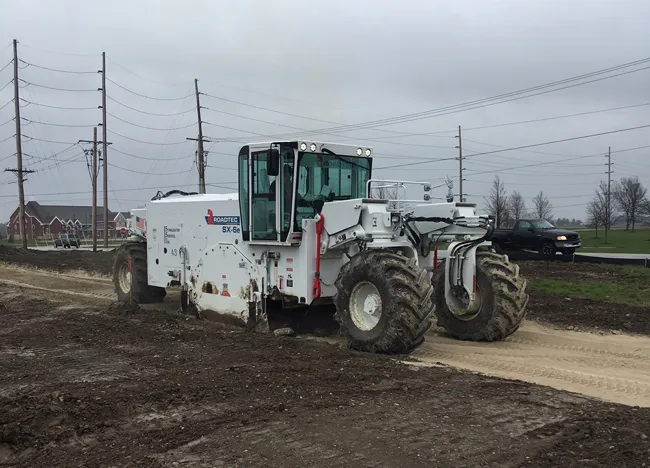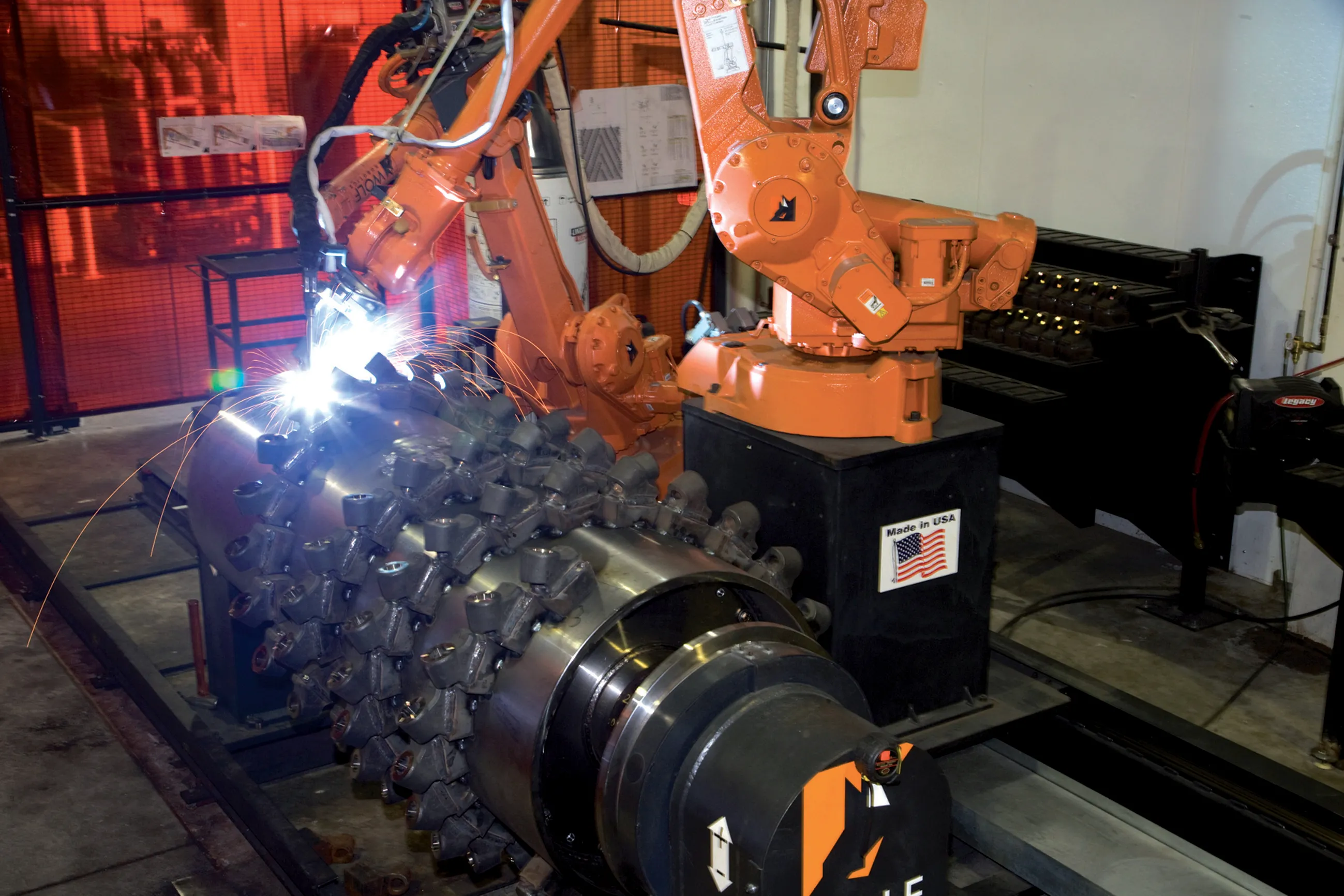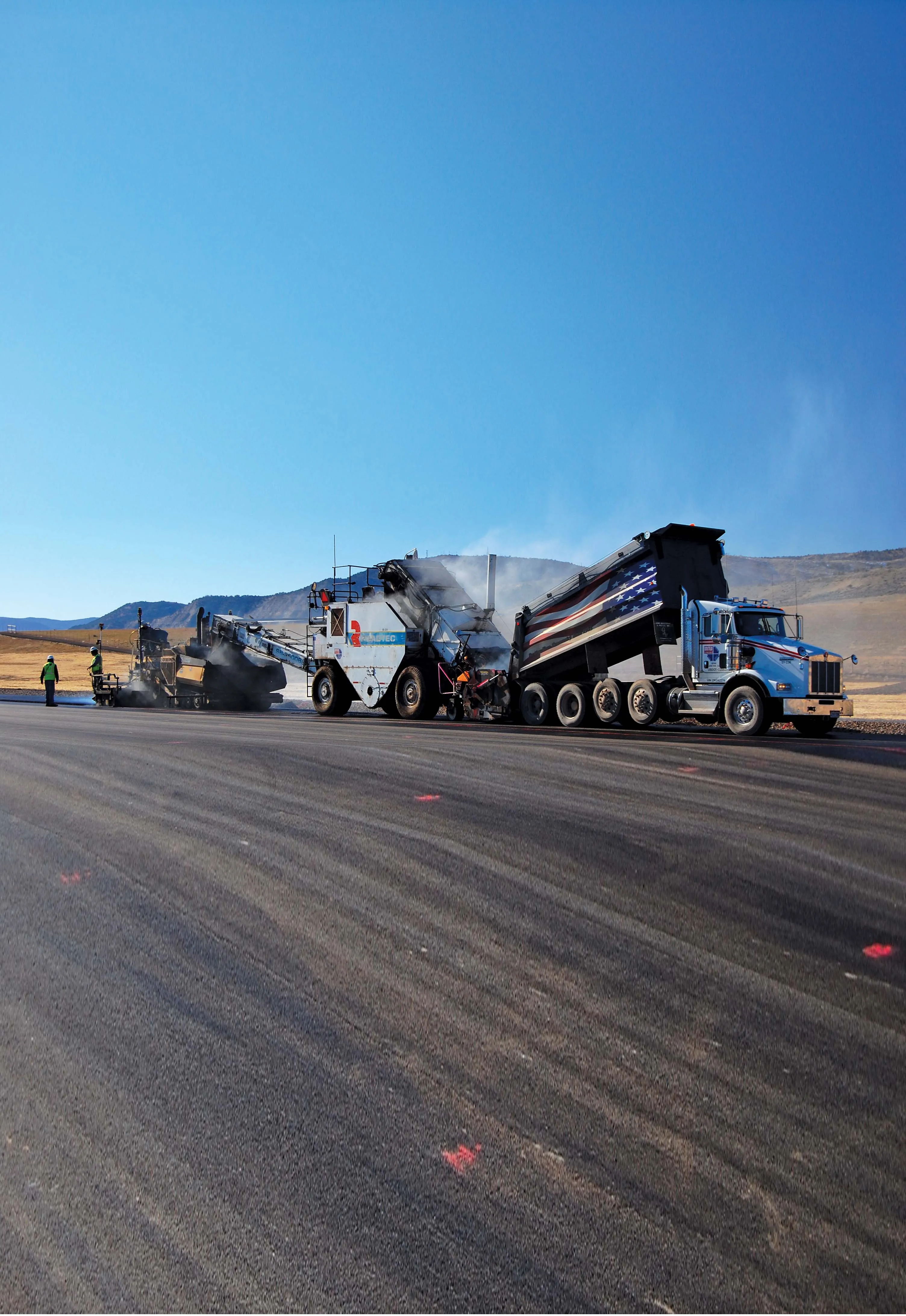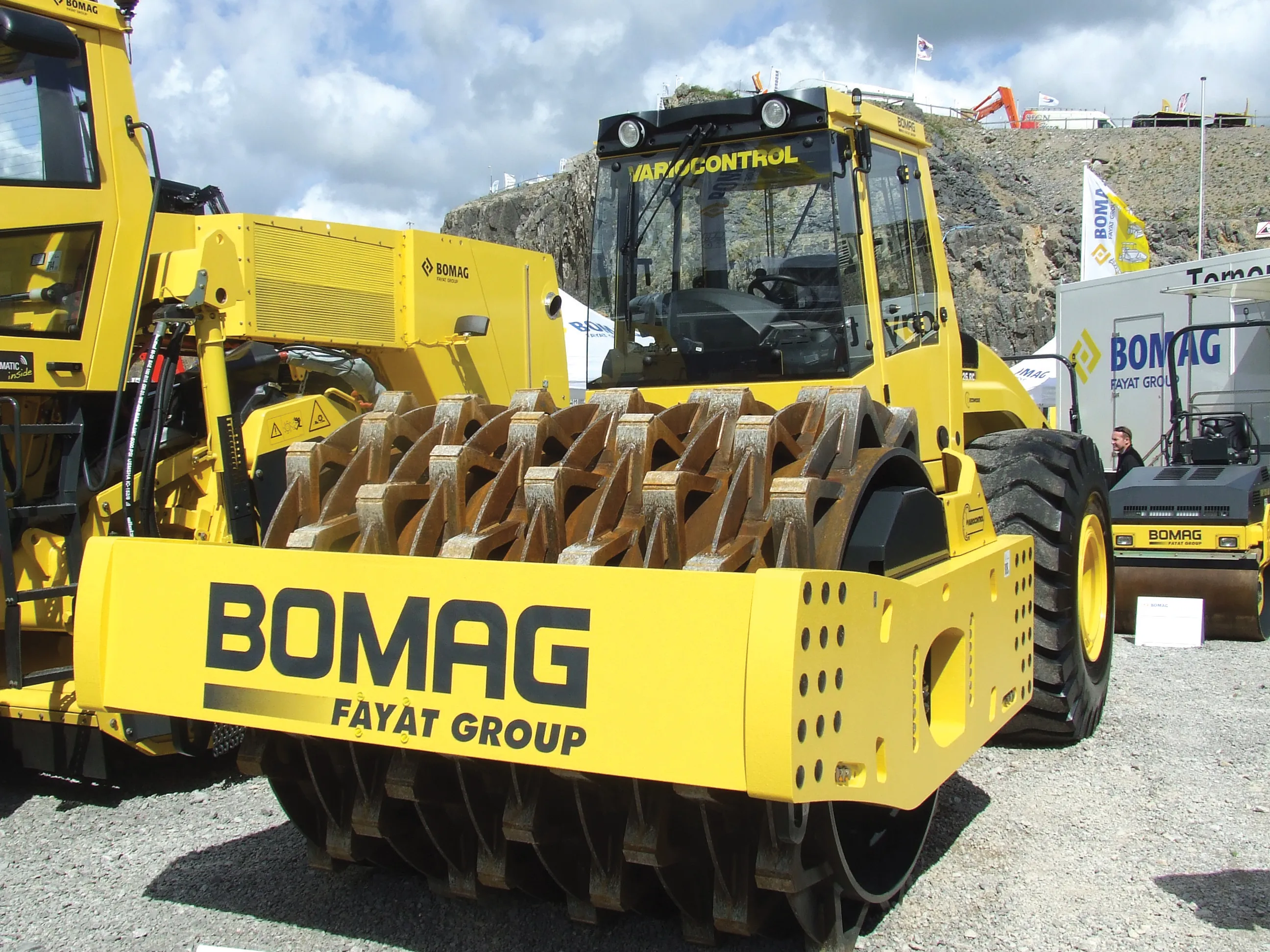
The ground in the area is well-suited to agriculture, however this is less well-suited to construction. As a result the developer decided to use a large-scale soil stabilising approach so as to ensure that the area would make a stable base for the project.
Local contractor Stabilization Services was brought in to prepare the ground. The US$325,000 project involved providing a building pad and parking lot for The Peterson Company, a local construction and property firm.
The MC-1 project is located on a 21.14ha site in Mount Comfort, Indiana and the site has easy access to I-70. The warehouse building pad is 34,187m2 and the surrounding parking lot is 37,160m2. Stabilization Services completed its work on the building slab in just three days using its
The mid-size SX-6e weighs 37.865tonnes and features a 503kW diesel engine that provides power to the rotor through a direct drum drive. The machine is capable of cutting up to 508mm deep and 2,540mm wide.









